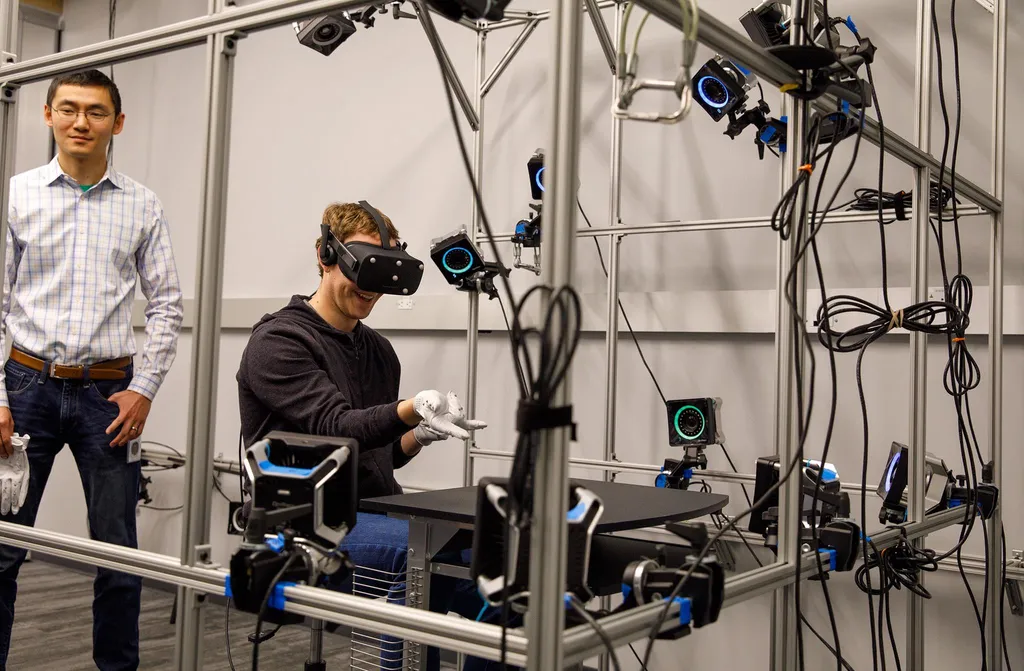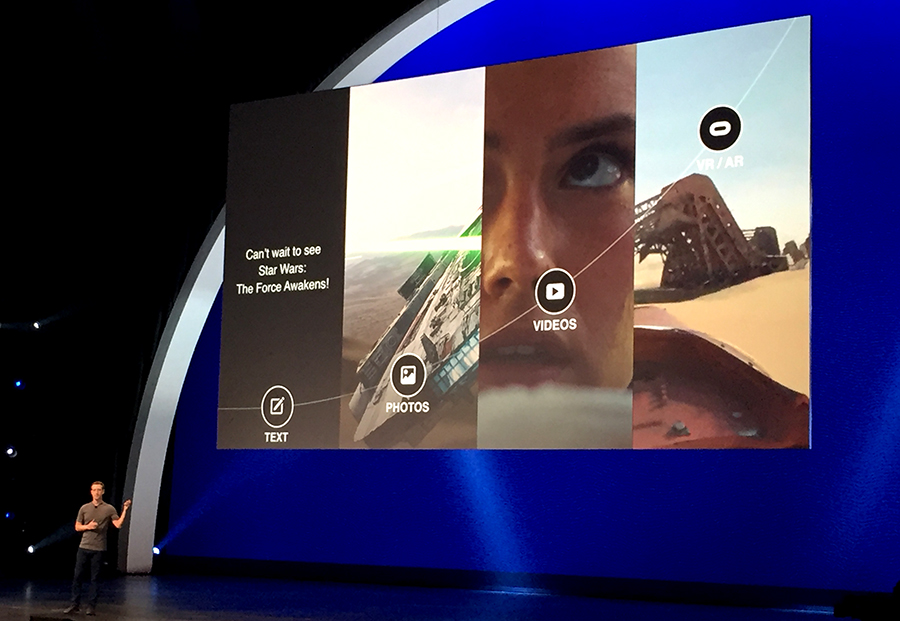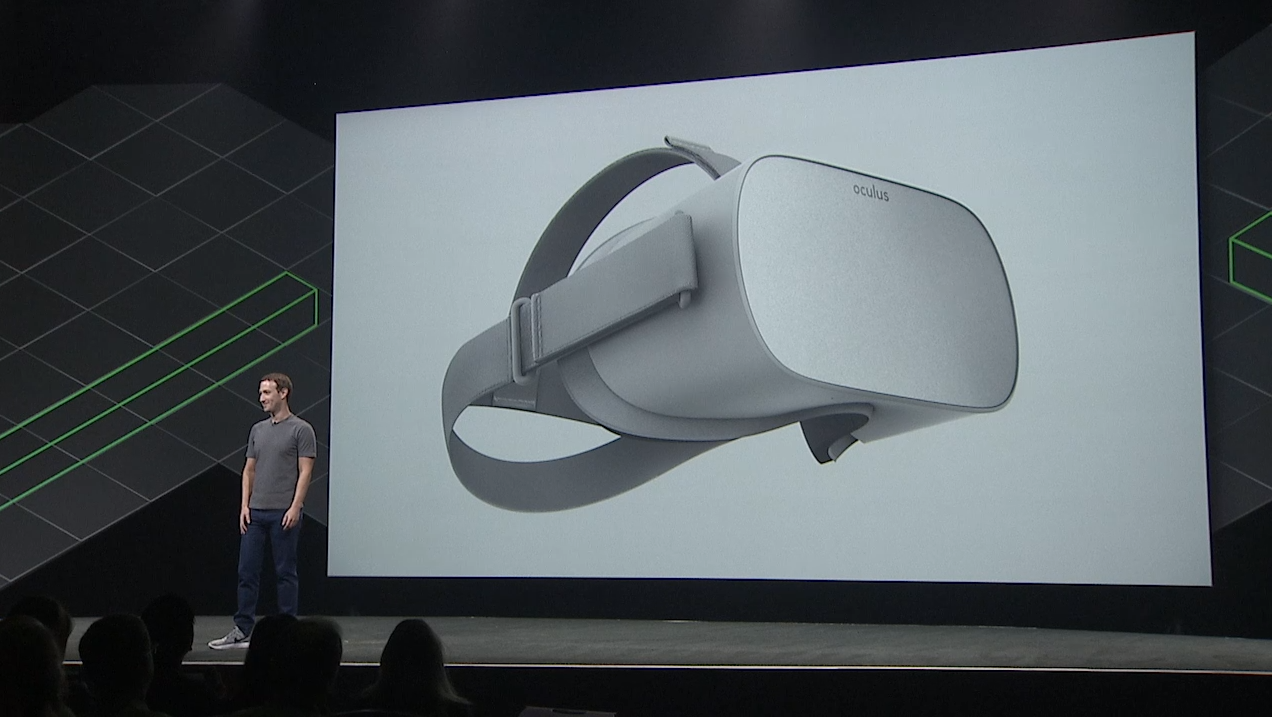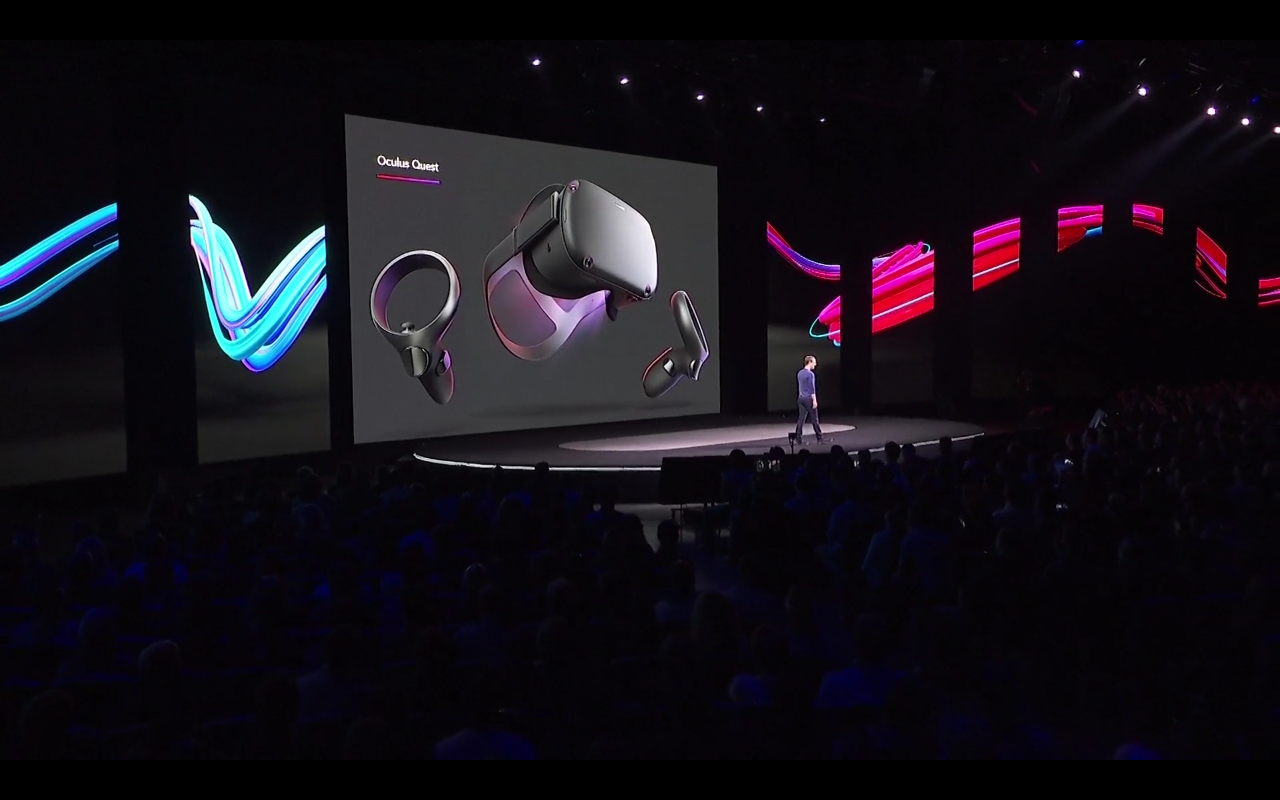NOTE: this article was originally published September 17.
Mark Zuckerberg’s quest for Oculus started taking shape five years ago with a trip in an elevator to see the offices of an ambitious VR startup based in Irvine, California.
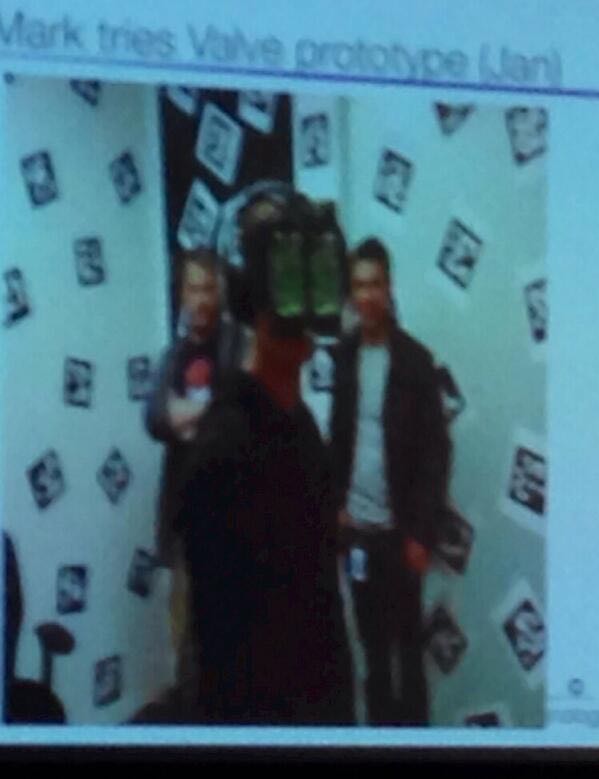
The Blake Harris book The History Of The Future says Zuckerberg previously saw some Oculus prototypes and felt “a little dizzy right after taking off the headset.” That day in January, the book says, he saw “some prototypes of DK2” as well as Valve’s “room” demo.
Someone relayed to the public the Zuckerberg visit in January 2014, but few noticed. A few months later Atman Binstock, described as one of the “driving forces behind Valve’s VR project,” joined Oculus. The world got wind of the change coming from Facebook and Oculus on March 25, 2014, when Facebook announced its acquisition of the startup. Three days later, Oculus announced Valve’s Michael Abrash would come to the company and become its Chief Scientist working on research that could be key to enabling long-term VR use.
If this were a Marvel movie and the Infinity Gauntlet a real thing, then imagine the glove came with spots on it for people like John Carmack and Atman Binstock and, now with Abrash joining Facebook to do long-term research? This is the moment the gauntlet would come to life in Zuckerberg’s hand and he could snap his fingers to make anything he wanted happen.
In this framing, whether you see Zuckerberg as hero or villain could dramatically shift your view of the rest of this recap of the last five years. We’ll get our next major update from him at Oculus Connect 6 on Sept. 25 and 26. Ahead of that conference and its updates, then, here’s a look at how Facebook’s CEO found his way to the Oculus Quest, as told by his speeches at the Oculus Connect developers conferences.
Oculus Connect (Sept. 19 & 20, 2014)
On Sept. 19 of 2014, Oculus co-founder Palmer Luckey’s birthday, Facebook hosted the first Oculus Connect developer’s conference.
Zuckerberg made no public speech at this first event.
Oculus Connect 2 (Sept. 23-25, 2015)
In 2015 at OC2, Zuckerberg spoke for roughly three-and-a-half minutes about Facebook’s mission “to make the world more open and connected, and we believe that the more power that people have to share and experience all kinds of different things in the world, the better the world will be,” before showing a 360-degree video and saying “this is going to grow slowly.”
On that same stage Luckey walked out in flip flops and announced Minecraft would be coming to Oculus headsets.
“Don’t die,” Luckey said, tossing little foam swords to the audience. “My work here is done.”
I found Carmack, Oculus CTO, answering questions at the same conference. I filmed him for the first (and last) time at an Oculus event. He said:
“It does not look good for making an inside out tracking system that doesn’t consume a whole lot of battery power,” Carmack said. “We have like 30 computer vision experts at Oculus from the different companies we’ve acquired and none of them want to just go solve this problem. They’re all working on their esoteric, kind of researchy things while this is a problem that I want solved right now. I wish somebody had spent all of this last year on it.”
Oculus Connect 3 (October 5-7, 2016)
Zuckerberg spoke for more than 16 minutes on stage and offered his most expansive and detailed plan yet for VR products and research.
“When I was first getting started in thinking about Facebook, I looked around at the Internet, it was 2004, and I realized that you could find almost any type of content that you wanted on the Internet — games, news, music, movies, reference materials — almost anything, except for the one thing that we all care the most about which is what’s going on with the people that we care about around us,” Zuckerberg said. “So I built that. And, um, it’s going pretty well so far. There are about 1.7 billion people using Facebook today and, you know, I think that just underlies this point that we really want our software to be built with people at the center of it.”
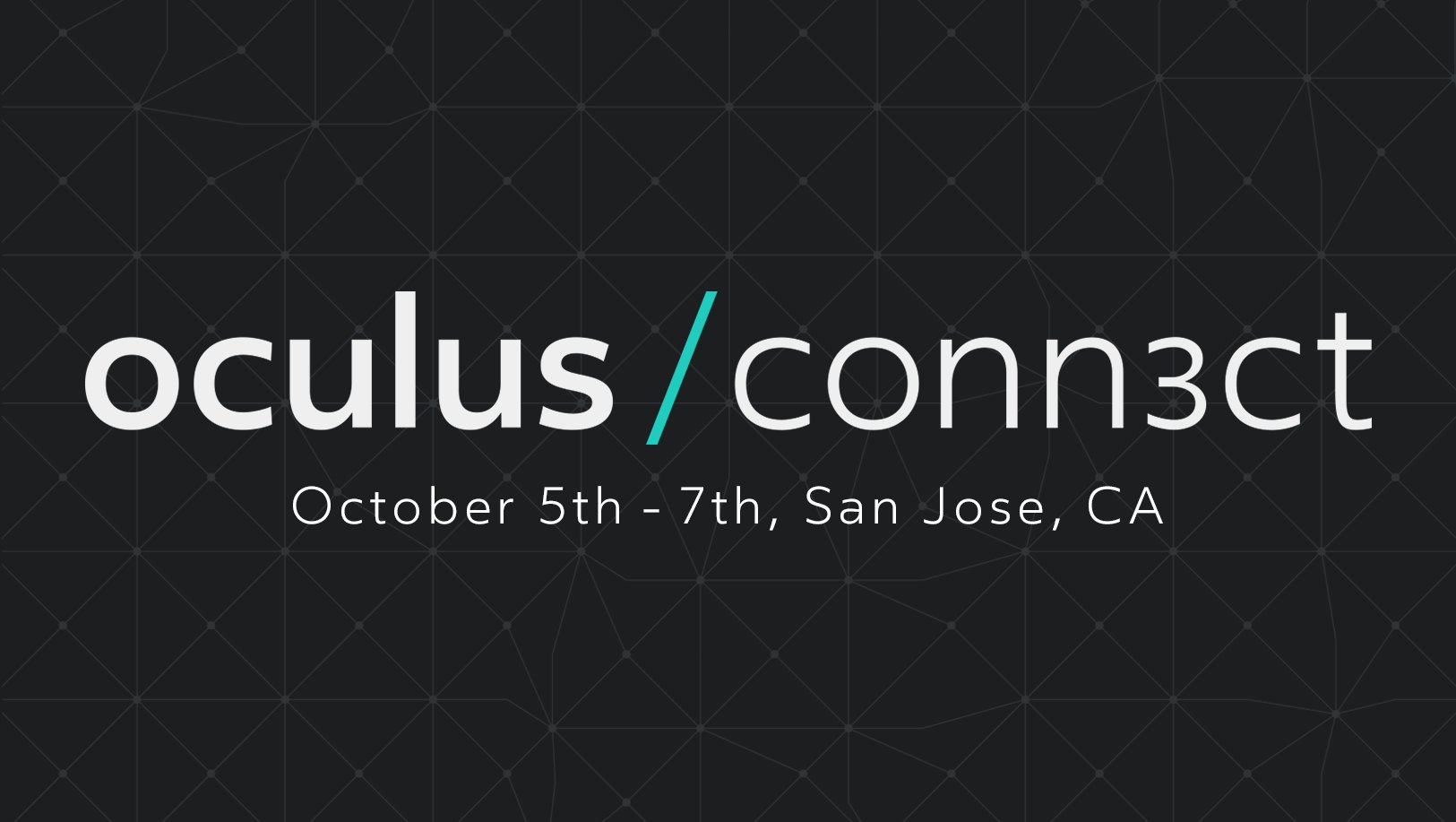 Facebook had not yet shipped its fundamental Touch tracked controllers for Rift. Still, Zuckerberg took this opportunity to more fully state his strategy over the long term. He committed to funding more gaming content and setting up a separate section for education content on the Oculus store.
Facebook had not yet shipped its fundamental Touch tracked controllers for Rift. Still, Zuckerberg took this opportunity to more fully state his strategy over the long term. He committed to funding more gaming content and setting up a separate section for education content on the Oculus store.
“There is one more kind of software that I’m really excited to talk about today and that’s Computer Vision Software, because computer vision software can unlock an entirely new category of VR product,” he says before describing inside-out positional tracking. “No one has gotten this to reliably work in virtual reality yet.”
While others working at Facebook had already described the goal of reaching a standalone VR product, this moment is important because Zuckerberg himself is clarifying the product roadmap to developers upon which Facebook will focus for several years in the future. And this is all before he’s even fully shipped the first generation VR product with Touch controllers.
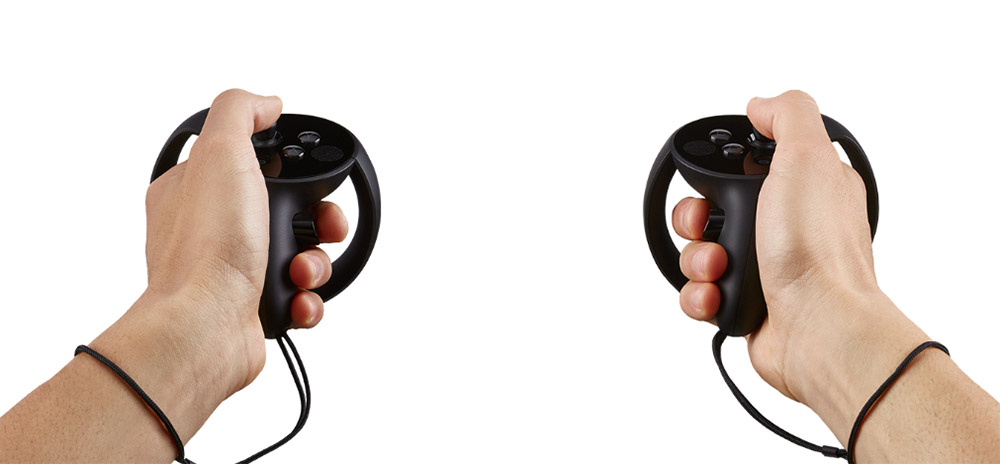 He commits to targeting “a sweet spot…standalone virtual reality product category that is high quality, and that is affordable, and that you can bring with you out into the world because it is not tethered to a PC and because it has inside-out tracking so it can track your position as you move through the world.”
He commits to targeting “a sweet spot…standalone virtual reality product category that is high quality, and that is affordable, and that you can bring with you out into the world because it is not tethered to a PC and because it has inside-out tracking so it can track your position as you move through the world.”
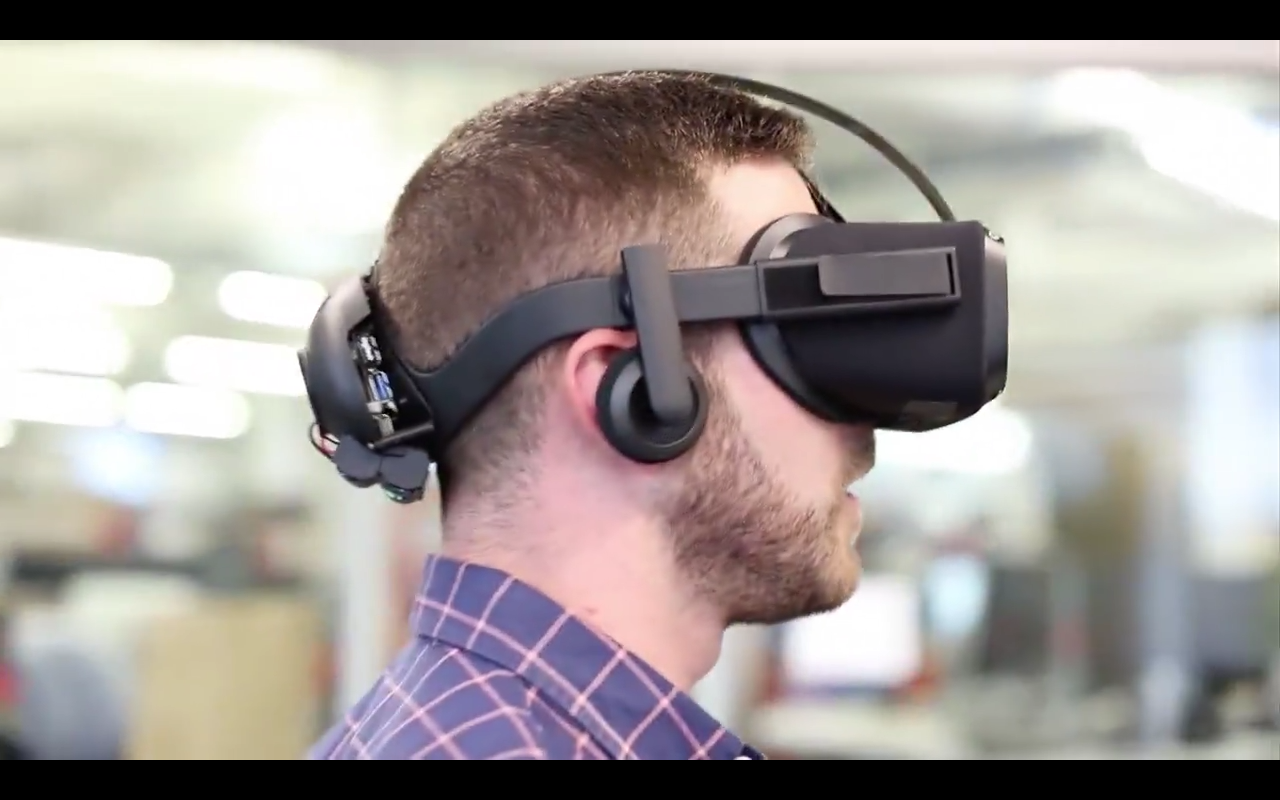
Zuckerberg demonstrated the Oculus Touch controllers on stage with a social VR experience. Not long after Zuckerberg finished his speech, Facebook offered me a demo of an inside-out tracked headset prototype.
He closed the talk in 2016 by saying:
“There’s a saying in technology that it’s often easier to predict what the world is gonna be like 20 years from now than it is to predict what the world is going to be like 3 years from now. I think we all know in virtual reality what the world is going to be like 20 years from now. It’s going to be the next major computing platform. So the real question is what do we need to do over the next 3 years, or next few years, to help make that possible. And we believe the key for the next phase is building these great software experiences to unlock all these different things.”
Oculus Connect 4 (Oct 11-12, 2017)
Mark Zuckerberg speaks for roughly 15 minutes covering a range of subjects including formally announcing Oculus Go, Facebook’s first standalone VR product, which he describes as “the most accessible VR experience ever” selling for $199.
This system, however, doesn’t use the computer vision technologies he talked about being so important on stage in 2016.
“But that’s not actually the only thing we’re working on in this sweet spot,” Zuckerberg says of the standalone category.
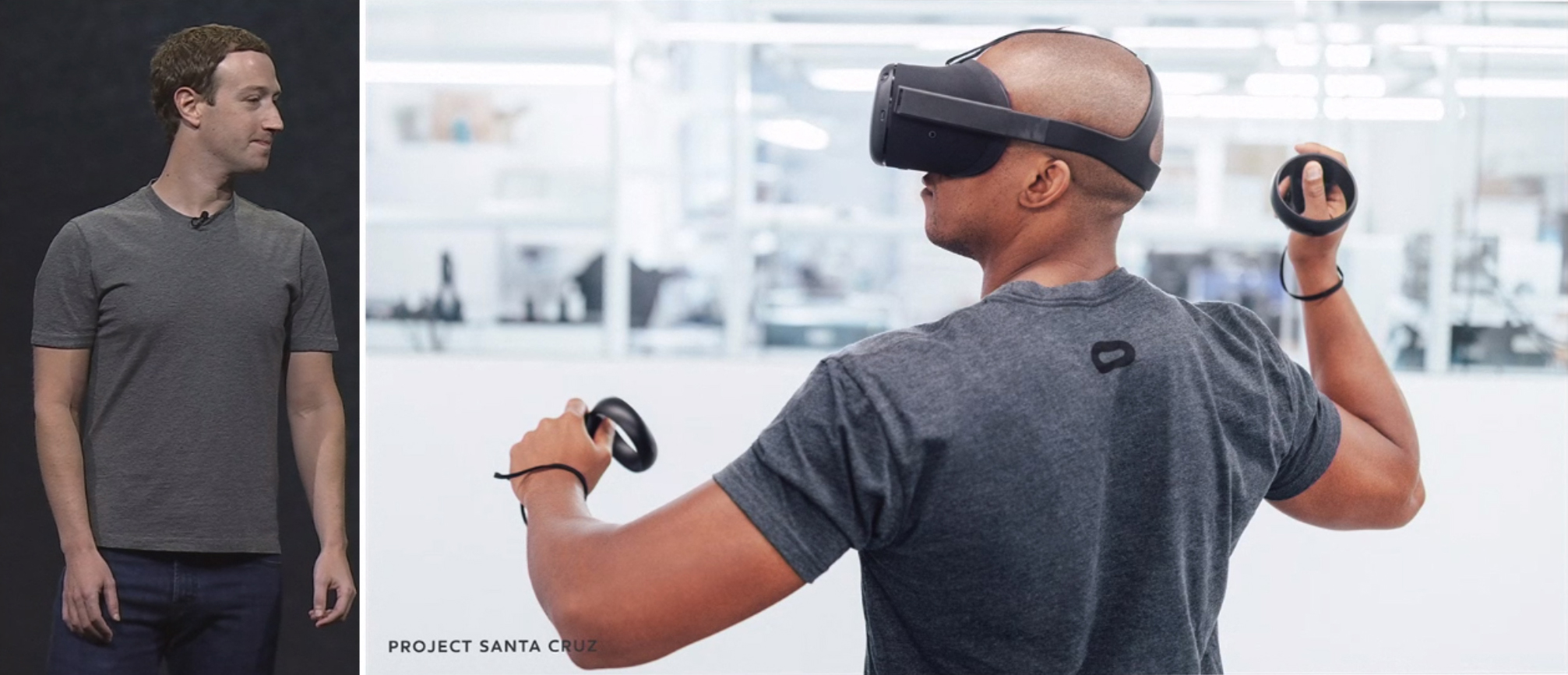 Zuckerberg commits to the developers at Oculus Connect in San Jose, and those watching online, to shipping Santa Cruz (what would become Oculus Quest) to developers “in the next year.” Shortly after this speech I tried Santa Cruz for the first time with Oculus Touch hand controllers. It was very good.
Zuckerberg commits to the developers at Oculus Connect in San Jose, and those watching online, to shipping Santa Cruz (what would become Oculus Quest) to developers “in the next year.” Shortly after this speech I tried Santa Cruz for the first time with Oculus Touch hand controllers. It was very good.
The other focus of Zuckerberg’s speech in 2017 is a restatement of why he is committed to the development of VR technology: “Virtual reality is about imagining the world as it could be….it’s not about escaping reality, it’s about making it better.”
He describes doctors prescribing VR for pain relief in hospitals and people with low mobility able to access simulations when they can’t travel in the real world as key examples of why he’s focused on changing the world with VR technology.
“Some people say that VR is isolating and antisocial. I actually think its the opposite,” he says. “Yeah, today we need this big headset and that’s not great, we’re working on it. But saying that VR is isolating, because it’s immersive, is a really narrow view of the world that you’re all building. The reality is we all have limits to our reality, places we can’t go, people we can’t see, things we can’t do. And opening up more of those experiences to all of us — that’s not isolating — that’s freeing.”
To really drive his point home he comes to the core of his economic case for the technology:
“If you can’t think of any way that your reality can be better, then you’re not thinking hard enough. You know? Take your work. How long is your commute every single day? Now I don’t know anyone who sits in traffic and thinks to themselves, man, right here, this is the best that reality can be. Now a lot of people have ideas on how to make transportation better. Alright, self-driving cars, hyperloops, and don’t get me wrong I love all of that stuff, but it’s 2017 and the biggest trend in transportation is that its a lot easier to move bits around than atoms.”
Oculus Connect 5 (Sept. 26 & 27, 2018)
Everything Facebook’s worked on in VR for the last four years comes together on stage in 2018 at OC5.
Oculus co-founder Palmer Luckey is gone from Facebook and former CEO Brendan Iribe’s exit is just a few weeks away from being announced. The other people still working on VR at Facebook, people like Abrash and Carmack, are supporting what’s about to be shown on stage.
“We’re getting closer and closer to being able to easily step between physical and virtual worlds,” Zuckerberg says. “So for me this isn’t a question of whether we’re going to get there, it’s how. What are the exact steps we need to get there?”
Zuckerberg talks for less than 10 minutes in total. In that time he says he thinks that if there are 10 million people “on each platform” that’ll help the ecosystem “really take off.”
“What are the key attributes of the ideal VR system that we want to lock in now?” he asks. “We think that there are a few key qualities that any VR system that gets to scale needs to have. So first, it needs to be standalone. And so that way there are no wires.”
[Applause]
“Yeah. That way there are no wires that are going to break your feeling of presence or anything like that, and you’re going to be able to take it with you. Alright second, it’s got to support hands. Alright, because that’s gonna be how we’re going to interact with people and objects in a natural way in virtual reality. And third, it has to offer 6 degrees of freedom … so if we can bring these three qualities together into one product — then we think that is the foundation for the ideal form factor for VR.”
He reminds the audience that they’ve been working on this for years, and the last few Oculus Connects he’s talked about Project Santa Cruz.
[Small cheers]
“Today, we have some news for you.”
[Aw yeahhhh]
“I am excited to announce: Oculus Quest. It is shipping in the Spring and it is going to cost $399.”
[Big applause]
“This is it. This is the all-in-one VR experience that we have been waiting for. It’s wireless, its got hand presence, six degrees of freedom and it runs Rift-quality experiences.”
[Wooow followed by delayed applause]
“Full inside out tracking, full freedom to move around, no cables, no external sensors — just really good positional tracking.”
Clarification: Article updated Aug. 22 with information from Blake Harris book History Of The Future that adds to the timeline of Zuckerberg’s interest in Oculus.

